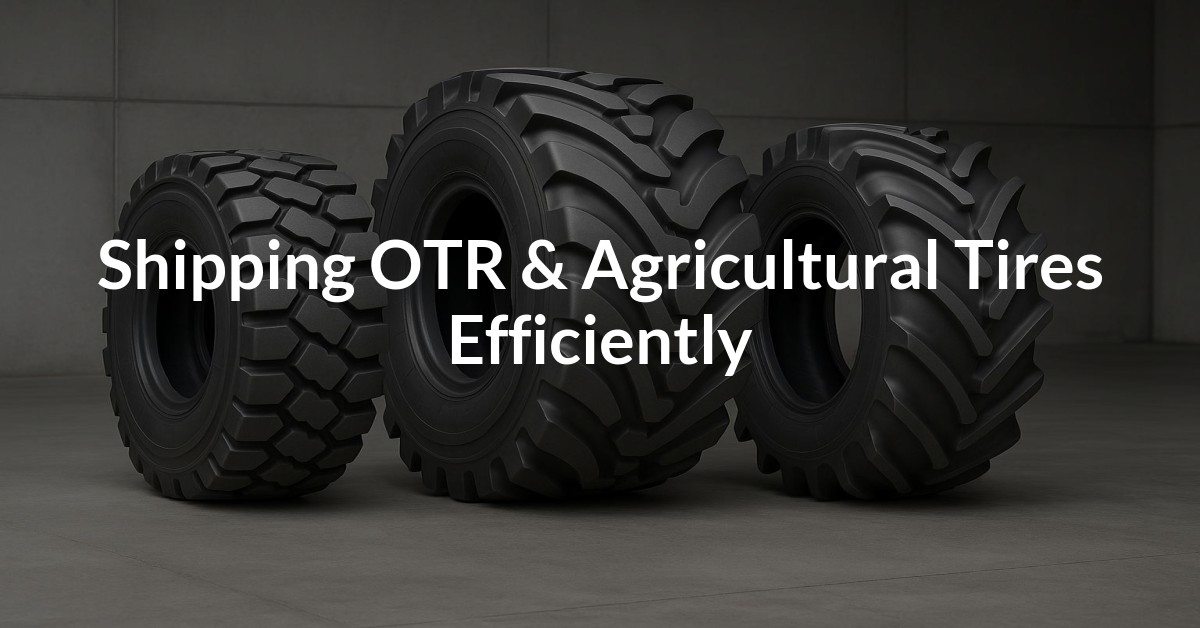Shipping Off-the-Road (OTR) and agricultural tires requires specialized knowledge and services, given their distinct sizes, weights, and uses. These tires are integral to construction and farming industries, which makes timely and secure transportation essential. At FreightSidekick, we provide a range of shipping options within the United States and Canada, tailored to handle such unique freight needs.
Understanding OTR and Agricultural Tire Specifications
OTR and agricultural tires are designed for heavy-duty use, which means they are often large and cumbersome, with weights varying significantly. They can range in diameter from 4 feet to 12 feet and weigh anywhere between 200 to several thousand pounds. These specifications necessitate precise planning and handling during the shipping process.
Choosing the Right Shipping Service
FreightSidekick offers several transportation options to accommodate the shipping needs of OTR and agricultural tires.
- Full Truckload (FTL): Ideal for large quantities or oversized tires, utilizing dry van, flatbed, step deck, or drop deck trailers.
- Less Than Truckload (LTL): Suitable for smaller or palletized shipments, up to 15,000 lbs.
- Partial/Shared Truckload: Cost-effective options for shipments that fall between LTL and FTL in size.
- Smaller Equipment Options: Box trucks, hotshots, cargo vans, and gooseneck trailers are available for more flexible shipping needs.
Preparing Tires for Safe Transportation
To ensure your OTR and agricultural tires are shipped safely, follow these preparation steps:
- Clean the Tires: Remove any dirt or debris to prevent complications during transportation.
- Inspect for Damage: Check for existing damage to ensure they will withstand the journey.
- Secure Packaging: Use pallets or crates for LTL transport to provide additional protection.
- Label Properly: Clearly mark each package with handling instructions and destination details.
Loading and Unloading Procedures
Efficient loading and unloading of heavy tires is crucial for minimizing handling damage. Use proper equipment such as forklifts or cranes to maneuver the tires into place. Ensure the load is evenly distributed to avoid vehicle imbalances.
Regulations and Permits for Heavy Tires
When shipping oversized tires, it’s important to comply with transportation regulations. This includes obtaining necessary permits for over-width, over-height, over-length, or over-weight shipments. Our State-by-State DOT Regulations tool can help you identify the requirements for each region.
Key Role of the Bill of Lading (BOL)
The Bill of Lading is a critical legal document in freight shipping. It serves as a receipt and a contract for the carriage of goods. Make sure it's filled out accurately to avoid delays or legal issues. You can create a valid document using our Bill of Lading Generator.
Cost Factors to Consider
Several factors influence the shipping cost of OTR and agricultural tires, including:
- Weight and Dimensions: Larger and heavier tires generally cost more to ship.
- Distance and Destination: Longer hauls or remote locations may increase costs.
- Handling Requirements: Special handling or equipment needs can affect pricing.
Get Personalized Assistance for Shipping OTR (Off-the-Road) & Agricultural Tires
Need expert advice for shipping your heavy-duty tires? Get a quote today, call us at 877-345-3838 or email support@freightsidekick.com.











